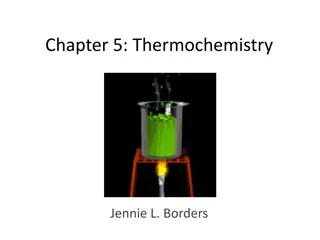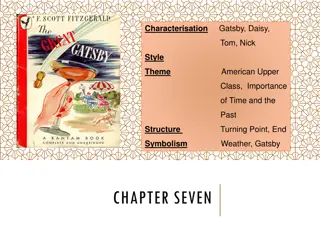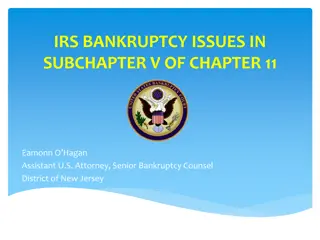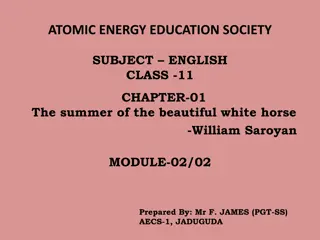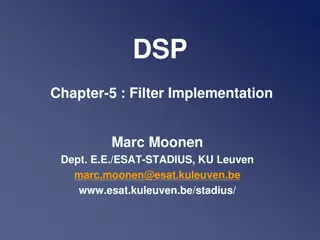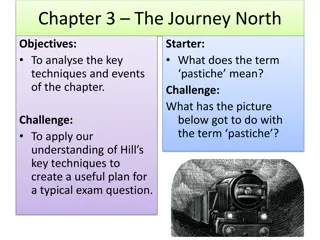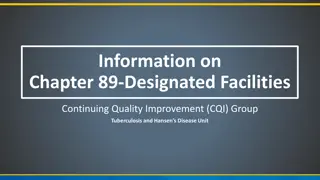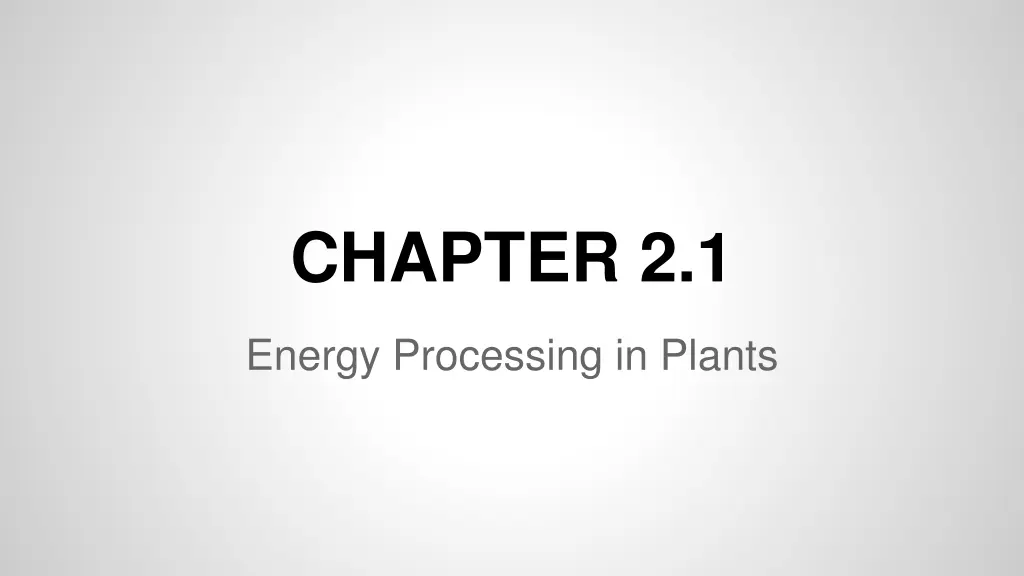
Energy Processing in Plants: Photosynthesis and Cellular Respiration
Learn about the process of photosynthesis in plants, where light energy, water, and carbon dioxide are converted into glucose and oxygen. Explore how leaves capture light energy and produce sugars, and understand the importance of photosynthesis in producing oxygen. Discover cellular respiration, the process that converts food energy into ATP for use in plants.
Download Presentation

Please find below an Image/Link to download the presentation.
The content on the website is provided AS IS for your information and personal use only. It may not be sold, licensed, or shared on other websites without obtaining consent from the author. If you encounter any issues during the download, it is possible that the publisher has removed the file from their server.
You are allowed to download the files provided on this website for personal or commercial use, subject to the condition that they are used lawfully. All files are the property of their respective owners.
The content on the website is provided AS IS for your information and personal use only. It may not be sold, licensed, or shared on other websites without obtaining consent from the author.
E N D
Presentation Transcript
CHAPTER 2.1 Energy Processing in Plants
Materials for Plant Processes Raw Materials Light Water (H20) Carbon dioxide (CO2) End Products Oxygen (O2) Energy (food - C6H12O6) Glucose
Photosynthesis Photosynthesis A series of chemical reactions that convert light energy, water, and carbon dioxide into the food-energy molecule glucose and give off oxygen.
Leaves and Photosynthesis 1. Carbon dioxide (CO2), water vapor (H20), and Oxygen (O2) enter the leave thru the Stomata. 2. Most of the photosynthesis occurs near the top of the leaf. 3. Gases are stored in the spongy area of the leaf.
Capturing Light Energy 1. First Step of photosynthesis a. Light energy capture takes place green plants. b. Chloroplasts contain pigment chlorophyll. c. Energy is transferred to water molecules water splits releasing H and O
Making Sugars 1. Second step of photosynthesis a. Occurs without light b. Carbon dioxide (CO2) combines with Hydrogen (H2) to form sugar (C6H12O6)
Why is photosynthesis important 1. Photosynthesis produces most of the oxygen in the atmosphere. A Quick Review: Photosynthesis In The Chloroplast (Basic Overview) This is just a short tutorial about the process of photosynthesis in the chloroplast. Since it's for my 7th graders I kept it pretty basic. However, I will add two things for those who may be higher level and using this as a general over view: Step 1 of Photosynthesis : The Light Reaction. This is the step where photolysis or the splitting of water occurs. Oxygen is created and released. The energy produced that I was referencing is ATP and NADPH. These are created by the hydrogen ions (H+) molecules that were split from the water molecules. Step 2: The Calvin Cycle- NADPH and ATP transfer energy to convert carbon dioxide into glucose molecules. (That's the gist of the process).
Cellular Respiration Cellular Respiration A series of chemical reactions that convert the energy in food molecules into a usable form of energy called ATP
Releasing Energy from Sugars 1. Occurs in the cytoplasm and mitochondria of cells. 2. Glucose molecule is broken down a. Add oxygen 3. Waste product is water vapor and carbon dioxide.
Why is cellular respiration important? 1. Gives you energy a. Growth b. Tissue repair c. Reproduction
Comparing Photosynthesis and Cellular Respiration Photosynthesis - Chloroplasts Raw materials Carbon Dioxide, Water, Light End products Oxygen and Energy (ATP) 6CO2+ 6H2O + Light 6O2+ C6H12O6
Cellular Respiration - Mitochondria/Cytoplasm Raw Materials Oxygen, and Glucose End Products Carbon Dioxide, Water, and Energy C6H12O6+ 6O2 6CO2+ 6H2O + Energy
Photosynthesis Respiration Photosynthesis and respiration | Chemistry for All | The Fuse School Learn the basics about Photosynthesis and respiration. What is Photosynthesis? How do plants make their own food? Find out more in this video! This Open Educational Resource is free of charge, under a Creative Commons License: Attribution-NonCommercial CC BY-NC ( View License Deed: http://creativecommons.org/licenses/by-nc/4.0/ ). You are allowed to download the video for nonprofit, educational use. If you would like to modify the video, please contact us: info@fuseschool.org SUBSCRIBE to the Fuse School YouTube channel for many more educational videos. Our teachers and animators come together to make fun easy-to-understand videos in Chemistry, Biology, Physics, Maths ICT. This video is part of 'Chemistry for All' - a Chemistry Education project by our Charity Fuse Foundation - the organisation behind The Fuse School. These videos can be used in a flipped classroom model or as a revision aid. Find our other Chemistry videos here: https://www.youtube.com/playlist?list=PLW0gavSzhMlReKGMVfUt6YuNQsO0bqSMV Twitter: https://twitter.com/fuseSchool Access a deeper Learning Experience in the Fuse School platform and app: www.fuseschool.org Follow us: http://www.youtube.com/fuseschool Friend us: http://www.facebook.com/fuseschool





